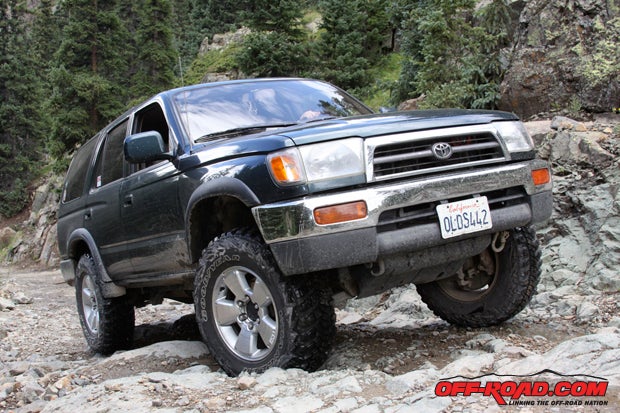
If you’re a committed builder of your truck, you’ve probably found excellent original-equipment parts from the manufacturer (OEM) that work great off-road. These OEM bits – be they beefy brakes, a stout A-arm, a special hub, a unique power part or a factory locker – are usually built better than aftermarket parts, and swapping them is often turn-key. Unfortunately, killer OEM parts can also be hard to find, and their installation is often complicated by information shortages and fitment hurdles caused by the niggling mid-run assembly line tweaks that manufacturers make throughout a product’s lifespan.
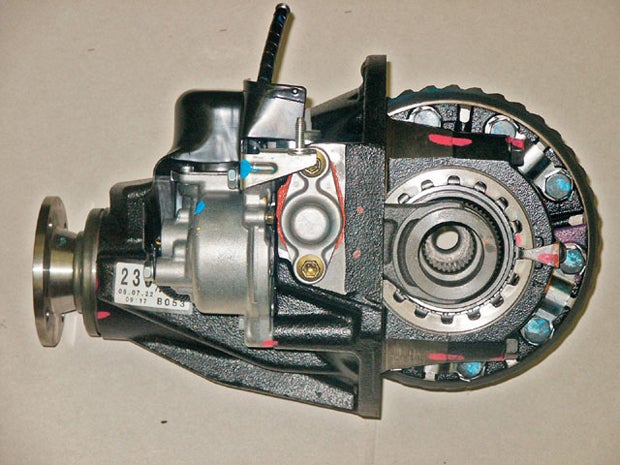
In this case, Toyota’s electric locking differential/axle combo – the e-locker axle – in the third-gen 4Runner (and Tacoma, if we’re just talking about the center section, which is often referred to as the “pig”) is both. The e-locker is a real gem: a cab-controllable instant-on 100% locker that was sold with certain 1996-01 4Runners, plus some four-wheel drive and PreRunner Tacomas. The e-locker center section will fit first-generation eight-inch Toyota axle housings (named for the eight-inch ring gear in the diff), which were sold with most early 4Runners and pickups, on all 1996-02 4Runners and all e-locker-equipped Tacomas. That said, there are about a dozen different diff-axle-gear combos for these trucks you need to be aware of, and there’s some minor work required when installing the e-locker center section on a non-locking eight-inch axle housing. Meanwhile, the wiring that supports this diff locker is straightforward, but not simple.
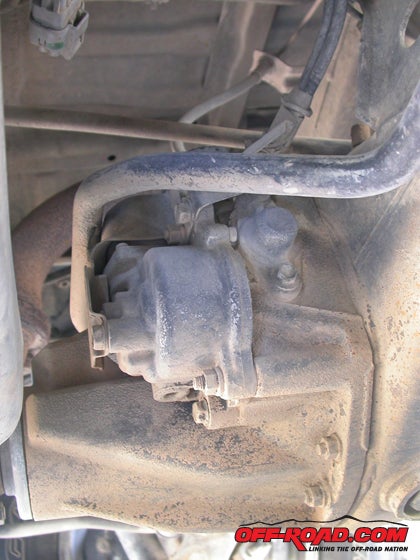
Rule #1: The nuts and bolts of the swap are easy – this is, after all, a Toyota.
Rule #2: Toyota likes to make mid-year and mid-run design changes. Their engineers are militant about what they call “muda” (waste), so they don’t stand around when it’s time to improve parts or processes. For instance, a green-yellow wire on a 4Runner built in May of 1996 can be green-green for 4Runners built in June.
Rule #3: Toyota’s muda-aversion fixation (combined with their affinity for lots of technical options) means you need to pay close attention to two areas of this swap: gear ratios and wiring.
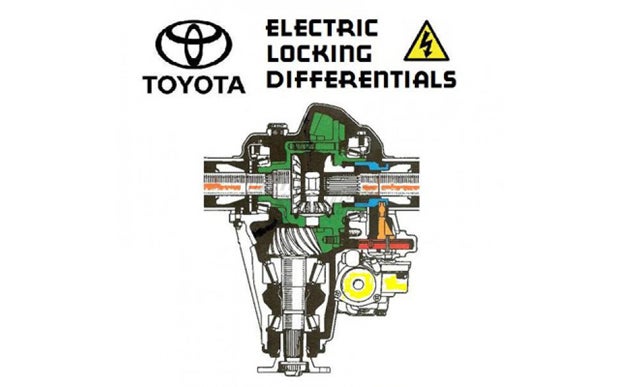
Rule #4: Gear ratio differences are straightforward to decipher, if not easy. For example, the 4Runner in this story had five gear options at the time it was assembled. The wiring is where your biggest challenges lie, whether recreating OEM wiring or rigging a shortcut setup.
Rule #5: Do your research – we did. Soooooo much of the information you need is online because someone else figured it out before we did.
Rule #6: There’s lots of detail surrounding this swap, so we’ve probably missed something. Feel free to update/augment our information in the comments section.
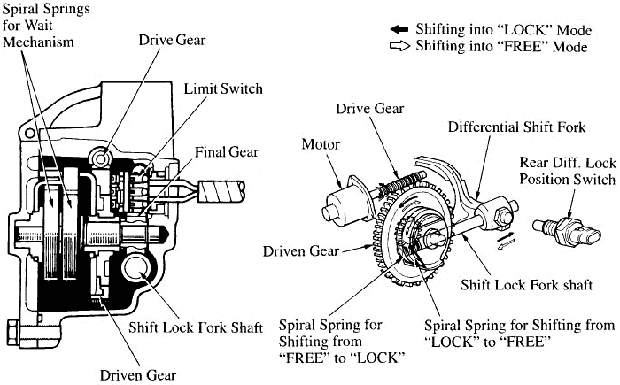
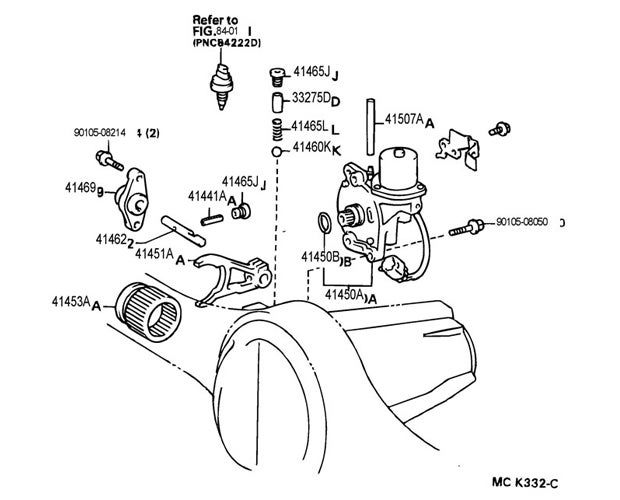
Now, there is a ton – possibly even a crapton – of information about elements of this swap online, but it’s all over the place, and not always focused on what you want to know. Because we put an OEM Toyota e-locker diff in a third-gen 4Runner that was not equipped with one new, we’re focused on that. We will be referencing, have referenced, or plan to suggest you reference the same resources as were used for this article, all of which are listed. In addition, we’ll have another story that follows this one, which explains our adventures in wiring the e-locker using simple get ‘r done tech and, alternatively, factory-based components. However, the best teacher is experience, so get a little dirty. If you can’t find it on the web, you can find it under a Toyota.
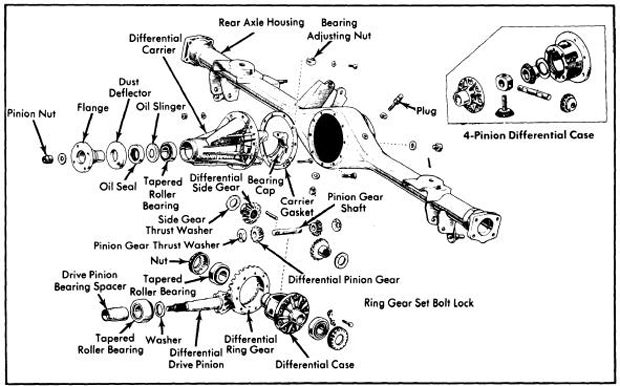
(Drive)Trains of Thought for e-Locker Options
There are several routes to take finding an OEM Toyota e-locker for a 4Runner. Keep in mind, we’re talking third-gen here, ’96-2002. There’s cross-swappability of this third-gen process to first and second-gen 4Runners, but that’s for another story.
Method One: Hunt down an e-lockered 4Runner axle and/or junkyard donor that has the same gear ration as yours. There were more than a few third-gens built with the electric rear locker. It’s the simplest route, because matching 4Runner means matching axle housings (third-gen 4Runners are coil-sprung in the rear, while the like-axled Tacos are leaf-sprung back there). Buy the whole damn thing and the physical installation takes about two hours - not including the wiring.
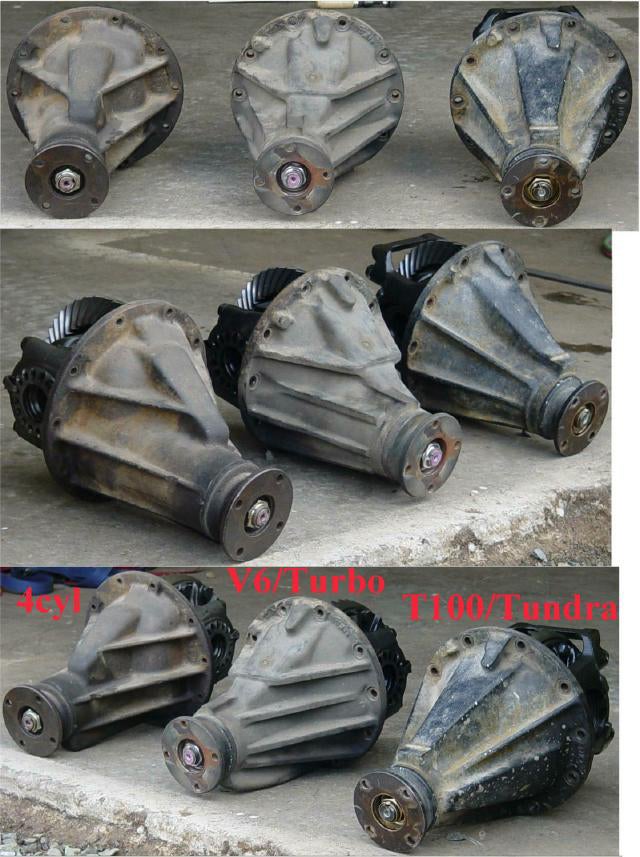
Method Two (what we wound up doing): Find an e-lockered 4Runner whose owner is willing (either they’re planning to put new gear ratios into their truck, or it’s headed for the junkyard), and swap front axles with them at the same time you get the rear axle. The front/rear swap is unnecessary if the gears in your 4Runner already match the e-locker, but that’s not usually the case (did we mention the dozen-plus gear possibilities here?). You might be able to trade up to better gearing (as it was in our case – we went from 4.10 to 4.30), and you might be able to avoid breaking open the front and rear pigs to regear them. In this case, we bought the rear axle, complete, and traded front diffs. Removing a front diff from a four-by Toyota truck will take a pro about an hour, and if you used a shop instead of your driveway, you can have that shop leave your rig in the air overnight while you score the front axle, and they can install the newfound front axle the next day.
Method Three: Lots of first-gen Tacomas (1995.5-03) were sold with an e-locker (look for e-locker-equipped four-wheel drive and “PreRunner” models). That center section (also referred to as a “third member”) is almost a bolt-in to a 4Runner’s eight-inch axle housing. We say “almost” because there is some fabrication to do on an originally unlockered axle housing, but it’s not complicated work. As with option #1, prepare for gear swapping. Note: the front diff/axle housing on four-by Tacos from 1995.5 to 2003 will fit with the third-gen 4Runner, so the front/rear diff-trade maneuver in #2 is possible.
There are some great home-brewed reports on this method online:
Probably the most referred to e-locker swap on the Web.
Another detailed collection of e-locker installation information, this by Hoaiphong Truong and the “PhoRunner”.
Bob’s e-locker swap on a 1998 4Runner, with a thorough parts list and good pics.
Method Four: Instead of modifying your no-locker 4Runner’s axle housing, enlist your best fabricating-genius friend and remove the leaf perches and other Tacoma-specific bits from the e-lockered Taco axle, and weld on two coil-spring perches, the trailing arm and lateral link mounts and ancillary connectors to match those on your 4Runner axle. This is a good time to gusset the axle as well. Spring alignment requires some thinking, so don’t try to do it at 3:AM, or without thinking. Again, you’ll probably be swapping gears unless you also swap front axles. #4 makes the most sense if you’re doing an aggressive modification/fabrication treatment to the truck outright. If you compare the Toyota pickup axle to the 4Runner, however, you’ll note this is not an option for someone in a hurry – there’s a few parts to this process. #3 is comparatively easy.
Method Five: Take #3 and insert “FJ80 Land Cruiser with the locking front differential” in the place of “Tacoma” and you’re most of the way there. The FJ diff, however, is a sweet high-pinion version of the eight-inch diff in the e-locker. The high-pinioned diff provides the input gear a little more leverage on the ring gear and can cope with more torque, and its higher pig-entry point means there’s more clearance to be had. That said, the 1993-97 FJ and FZJ-80 is not common in junkyards (making the e-lockered high-pinion diff even less so), and it’s not like the 4Runner is well hung with power anyway.
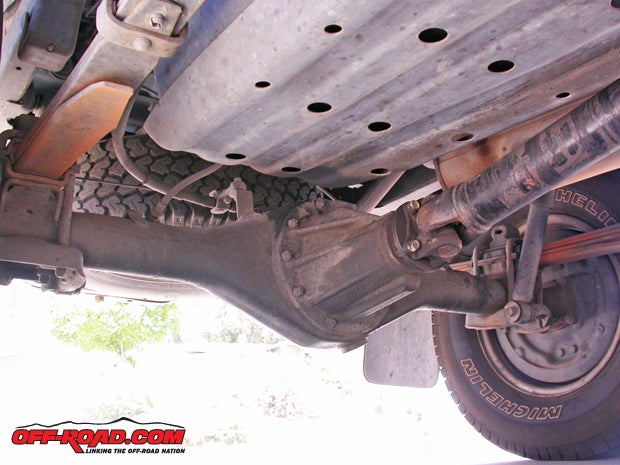
4Runner and Toyota Eight-Inch Diff and Axle Housing Background
The e-locker version of Toyota’s eight-inch differential is based on the common eight-inch diff that appeared under a bajillion Toyota pickups and 4Runners (in both two and four-pinion form; four being a bit burlier) with the eight-inch axle housing. The e-locker version is built using the stronger four-pinion diff sold on V6 and turbo’d 4Runners and pickups from 1986-95, and on almost all 1996-02 4Runners and all e-locker-equipped Tacomas, but is swappable with the two-pinion diff. The original eight-inch diff was nearing the end of its use-cycle with its appearance on the third-gen 4Runner and e-lockered Tacomas, and the electrically locked version was about as far as it evolved. It was replaced by a larger, stronger version of the eight-inch diff, which was used on Tundras, most Tacos (except for the e-lockered PreRunners) and the T100 pickup. The new eight-inch diff sported larger bearing caps and a bigger bolt spread at the diff-to-housing flange, and is not easily exchanged with the earlier-style eight-inch unit.
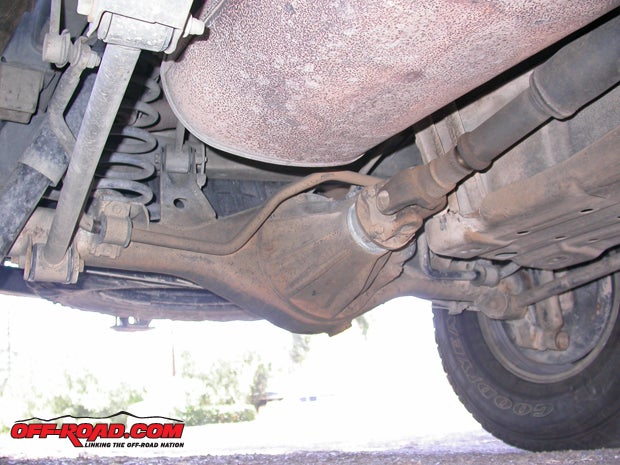
There are some naming conventions to be aware of – the term “ELocker” is owned by Eaton, and is used for their line of pin/cam electromagnetically-engaged lockers. What we’re referring to in this story is the electric locker used by Toyota, which uses a motor-driven gear and fork to engage and hold the diff housing, and which most folks refer to as an “e-locker”.
Because it’s likely the gear ratios in the truck you’re starting with probably won’t match the gears in the truck you’re getting parts from (unless you get lucky, or do the front diff swap), expect to regear. That means this is the time to consider your tire and power plans for the future, and if you’re planning on running tires bigger than 33-inchers (or approximately 275/75/16 or 275/70/17 in the metric), you’ll probably need to.
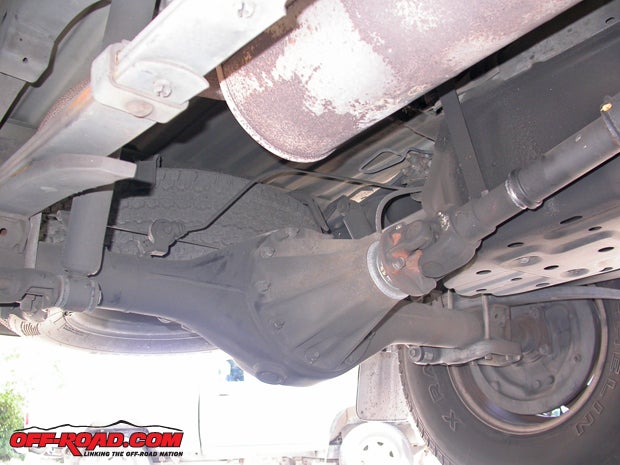
As far as gear installations go, unless you’re trained to set gears (or are of the mind that you don’t break that which ain’t), leave it up to a pro. That doesn’t mean you can’t check fluid and fiddle with the e-locker, because the Toyota unit is known for being easy to fix and easy to engage manually if the motor does fail. However, these things last a long time – even with hard use – provided you provide that basic maintenance. If your new-to-you diff came out of a running truck, isn’t making the death howl (or the guy you got it from stated that he was), and you’re not in need of new gearing, install it, pay attention to it while it bonds with your truck, and if there’s no outright sign of issues, it might not have any.
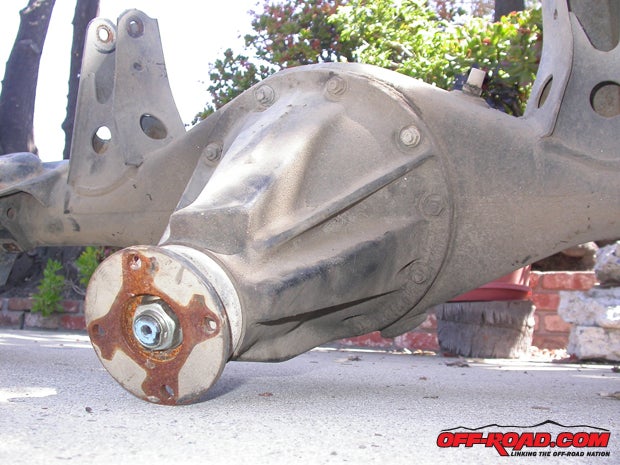
Do Your Research!
There’s plenty to learn about this swap online: forums like YotaTech.com, Pirate4x4.com, 4x4Wire.com and 4Runner.org have rehashed and reposted the process to the point of being repetitive. In addition, geeks and gearheads have published specific segments and specialized details useful to the e-locker swap process because that’s what geeks do. Retailers like the Switch Guys (OTRATTW.net), LowRangeOffroad.com and 12VoltGuy offer necessary (and/or hilarious) switchgear and wiring solutions, and Low-Range also retails the e-lockers themselves. As previously noted, the web is choked with other information about the swap, including at least a dozen wiring diagrams for connecting an e-locker using the OEM harnesses and interface, and a few setups that can be done with minimal investment (just search “wiring Toyota e-locker”).
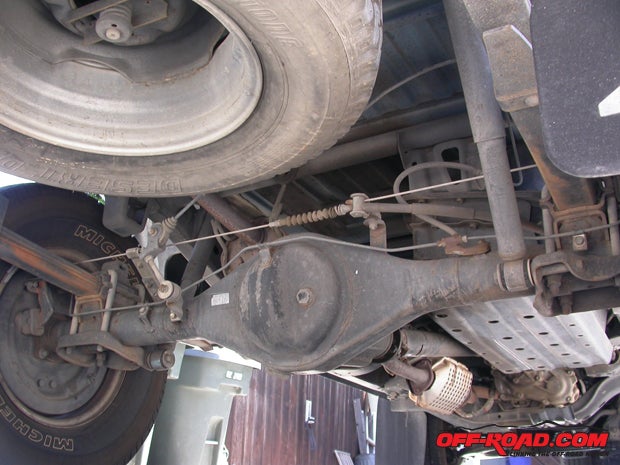
Off-Road.com has a useful piece with Toyota axle information, published in Y2K (“Toyota Differential Identification”), and though it’s lacking much for third-gen 4Runners and Tacomas, it’s got a lot of good learning.
Unfortunately, like most factory Toyota information, it’s not complete. We’ve learned that alongside the design tweaks done on the assembly line, Toyota also did a large number of wheel and tire swaps for U.S.-market 4Runners (all of which were built in Japan), and many third-gen 4Runners rolling off the transporter in American had their Japan-spec 15-inch wheels and tires swapped for a 16-inch combo. A Toyota tech friend stated that some of these 4Runners had their gears swapped at the same time (possibly an axle swap?), and though we couldn’t find more than anecdotal evidence of this, we did note that many of the 16-inch wheel/tired 4Runners had a gear ratio (4.10:1, in our case) that didn’t match the formerly ubiquitous axle-ratio chart.
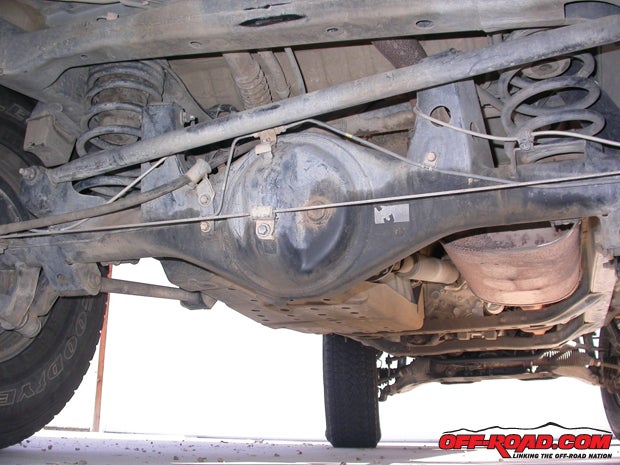
A source of valuable education for this e-lockering adventure was found at 4x4Wire.com: the legendary “Erik’s Diffs” page which is chock-full of historic Toyota truck differential and axle info. Like other resources we’ve found, it’s best to crosscheck everyone’s 1996-02 4Runner details, because there’s going to be discrepancies (you try building 750,000 4Runners and not have a few mutants come off the line). It’s best to admit, however, that some folks like “Erik” just know a lot of stuff we don’t. When looking for pure information, your best searches will probably follow the path that brought us back to the forums again and again – if someone’s thought it up, the forums will have it.
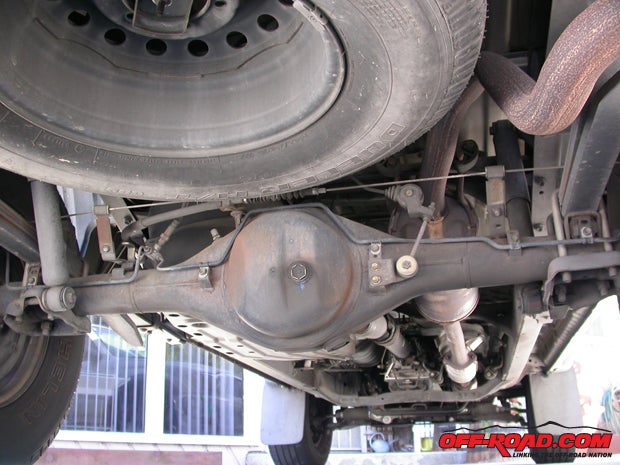
Here’s some links for you to start with:
Low Range Off Road cleared up lingering questions about parts availability and fitment.
More useful details about the swap by Karl Bellve and Ken Flesher.
Speaking of funny, the Switch Guys @ OTRATTW know a lot about electricity in automobiles, and sell hundreds of different Carling switches that say things like “’Squatch Lights” and “Zombie Mode” (and they’re not Chinese knockoffs).
Also made in the U.S., 12 Volt Guy builds switchgear similar to what we’re going to do with the non-OEM diff controller.
YotaTech: full of people who’ve already done every Toyota truck mod you haven’t thought of yet.
Pirate4x4: more mods, more models, more info, not as Toyota-centric.
IH8MUD: more Toyota, less 4Runner, lots of good information.
Bob’s involved (with good pictures) e-locker swap on a 1998 4Runner, at 4Runners.org.


 Your Privacy Choices
Your Privacy Choices